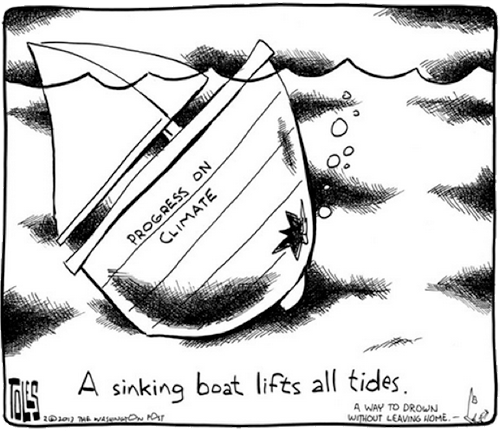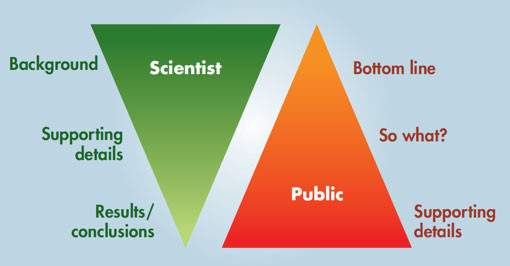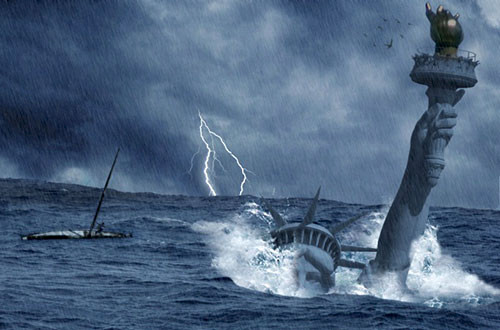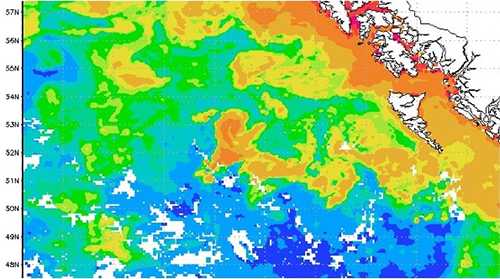Making Progress in Climate Change Requires Better Communication and Innovative Solutions
Jia “Claire” Gao, Maureen Brooks ·The evidence is overwhelming. The stakes couldn’t be much higher. Consensus exists among scientists1. And yet, the effect of human activities on the climate, at least in the United States, remains a topic of public debate. In fact, only about 61% of Americans polled think that the globe is warming2, and 40% think there is little scientific agreement on the matter3.

This large gap between scientific knowledge and public understanding, and the related gap between science and policy, result from a number of issues. Failures in communication are partly to blame. Historically, scientists have done a poor job of presenting evidence for climate change in simple yet convincing terms, to both the public and to policy-makers. For example, scientists often use words, such as ‘uncertain’, to mean different things than the public4, leading people to think there is weak scientific understanding of the matter. Scientific messages might have greater impact if presented with the bottom line up front, and with metaphors and analogies instead of scientific jargon. Many scientists, however, have been reluctant to change their vocabulary for fear of losing creditability with peers.

Scientific messages are also balanced against those of popular culture. Aside from the well-known documentary film An Inconvenient Truth, climate has played a large role in such films as The Day After Tomorrow, Waterworld, Sizzle, and Beasts of the Southern Wild. The discussion of climate change has also been occurring in social media, with various blogs dedicated to the subject, often with strongly polarized viewpoints. There are wide-ranging, sensationalized, and often inaccurate messages about climate change presented in popular culture.

Divisions in thinking about climate change have also been a result of the success of naysayers. There has been a well-organized effort to discredit scientific understanding of climate change. Part of this success results from the political and social savvy of the individuals involved. Partly it’s because of the nature of science and the inherent lack of simple yes/no answers to most issues. Efforts to discredit climate science range from objections about how data is being interpreted to attacks on the characters of the scientists involved, including ‘Climategate’ in which emails of a climate scientist were stolen and comments from the emails were used out of context, to damning effect.
A somewhat related issue is one of distraction; the notion being that the economic recession has drawn attention and resources away from other matters like climate change. David Costello, deputy secretary of Maryland Department of the Environment, places emphasis on this idea, and muses that more focus on climate change is likely to wait for an improved economy.
As a result of these gaps, little progress has been made in the US on dealing with climate change. Even if concerted actions are taken soon, it is possible that innovative solutions will be necessary. Although some people are concerned about relying on technology to solve climate change issues5, such ‘geoengineering’ solutions are being researched and developed. Examples of geoengineering methods for ‘capturing’ atmospheric CO2 include iron fertilization of some low-productivity ocean areas, releasing CO2-binding aerosols into the atmosphere, and building devices to ‘scrub’ CO2 from air. A handful of experiments with iron fertilization have been done, including a controversial unpermitted study off of California6, showing mixed results for carbon sequestration.

What can or should be done to insure that the worst potential consequences of global warming are kept in the realm of fantasy movies? Climate related policies have been slow to develop at both the National and State levels. While the debate continues, some improvements may be made by shifting the discussion. For example, efforts aimed at mitigating climate change might be framed in terms of community goals and mutual benefits. Development of greenspace in urban areas may provide both environmental and community benefits. Reduction in fertilizer usage in the Chesapeake Bay lessens eutrophication, helps ecosystem services, and also reduces greenhouse gas emissions. And, of course, we all need to do a much better job of speaking a common climate language.
References
2. Leiserowitz, A., Maibach, E., Roser-Renouf, C. & Hmielowski, J. (2012) Global Warming’s Six Americas, March 2012 & Nov. 2011. Yale University and George Mason University. New Haven, CT: Yale Project on Climate Change Communication, http://environment.yale.edu/climate/files/Six-Americas-March-2012.pdf
3. Anderegg, WRL et al (2010) Expert credibility in climate change. Proceedings of the National Academies of Science 107, 12107.
4. Summerville, R , S Hassol, Communicating the Science of Climate Change. Physics Today, October 2011.
5. Hofstede, G, GJ Hofstede, and M Minkov. Cultures and Organizations: Software of the Mind, 3rd ed. New York: McGraw-Hill. 2010.
7. http://www.washingtonpost.com/blogs/wonkblog/wp/2012/10/16/when-geoengineering-goes-rogue/
Authors
Jia Gao and Maureen Brooks
Next Post > Top ten tree and shrub symbols: Cypress, agave, weeping willows and gums
Comments
-
Melissa 12 years ago
Very nice read. Impactful and I love your visuals.
-
Bill Nuttle 12 years ago
Randy Olsen, author of "Don't Be Such a Scientist," has good insights into the reason why scientist have not been successful in connecting with the public on the climate change issue. I think he would agree with the main point of your inverted pyramid diagram to illustrate typical communication pattern by scientists, but he sees additional dimensions to the problem, such as the likability of the messenger. Check out his blog. This blog post (not Randy's) takes a stab at helping us to identify the main point to start with in just about any climate change discussion/argument: http://climatedesk.org/2013/03/this-cheat-sheet-will-make-you-win-every-climate-argument/
-
Dale Booth 12 years ago
Nicely said. And nice way to wrap it up with getting people to use a common language. ("we all need to do a much better job of speaking a common climate language") The visuals really do drive it home!
-
Yini Shangguan 12 years ago
I love your visuals as well, haha! Climate change is always a big concern and social media do help broadcast it.

